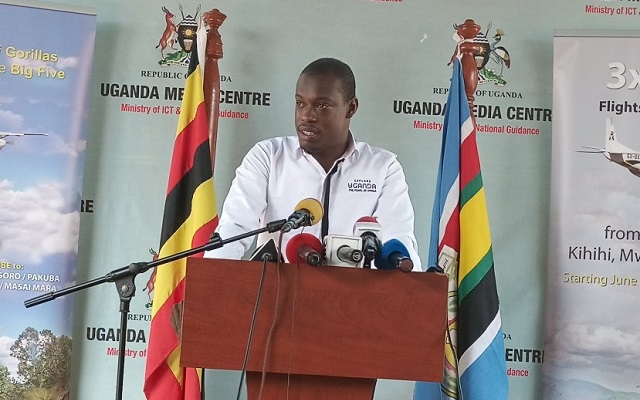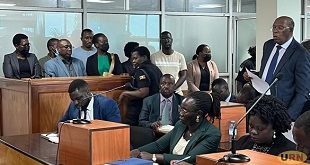
Kampala, Uganda | THE INDEPENDENT | The rising costs of fuel and other essential items is expected to affect the growth of the domestic tour and travel industry, one of the reasons the sector has to find mitigating measures.
The industry is mainly driven by transport, food and accommodation, with the first two already being affected by the rising costs of other goods and services like fuel.
As the country focuses on the promotion of domestic tourism to grow the industry after a two-year period due to COVID-19, the expected growth in demand is likely to be dented by fuel prices which is affecting the cost of transport.
Many Ugandans have admitted to reducing the frequency at which they sue their private vehicles, so as to manage their expenses, and this should reflect on other activities that require transportation.
The State Minister for Tourism, Wildlife and Antiquities, Martin Mugarra Bahinduka, says there is not much that can be done, apart from advising Ugandans to seek alternatives to the conventional modes of transport, or restructure their spending patterns while on travel. These according to him includes pooling resources for transport instead of going it individually, or opting for cheaper accommodation to balance off the high cost of transport.
He was speaking ahead of the Easter tourism season, where more Ugandans are expected to increase travel within the region as opposed to other times of the year.
Easter is not a popular tour and travel season mainly because of the global weather patterns compared to the December/January season when Africa attracts international tourism due to the more favourable weather.
However, the Ugandan tourism industry thinks it is an opportunity to grow domestic tourism because it is one of the two seasons when Ugandans increase their spending levels due to the long holiday. The State Minister Mugarra says that since the outbreak of COVID-19, they have realized that domestic tourism is better placed to sustain the tourism sector, especially protecting it from global shocks.
Before the outbreak, the country was registering more than 1.46 billion tourists and more than 1.2 billion dollars in revenues, with only coffee being the biggest foreign exchange earner. This plummeted to 400,000 visitors in 2020/2021. The target of the government is to see this rise to at least 1 million this year, before returning to the pre-pandemic levels next year.
To stress the importance of the domestic tourism segment of the market, in November and December last year, about 80,000 people visited the protected wildlife parks, and at least 70 of these were Ugandans, while foreign tourists were being prevented by the closure of borders.
The Managing Director of Sheraton Kampala Hotel, Jean-Philippe Bittencourt also reported that more than 60 percent of the visitors to his hotel were Ugandans. This was reechoed by the Vice President of the Uganda Hotel Owners Association Yogi Birigwa.
The State Minister Mugarra says the resilience of the Kenyan tourism industry was a good lesion to Uganda because it has a strong domestic business compared to Uganda. He says that if they can grow the number of domestic tourists to half of the total sector figure, it will help sustain the growth.
The Administration Manager, Adrift Uganda, Ruth Riley says they have seen activities return since the beginning of February, and hope that the reopening of the economy will boost this increase.
Among the sectors that are being targeted for growth are water tourism, cultural tourism and agricultural tourism. Ugandans have largely stayed away from some activities saying they are too expensive and meant for the wealthy foreign tourists.
For example, one main hindrance to growth accessibility to most of the attraction, is they are far-away from the capital and business hub of the country.
The country has a low developed aviation industry, which is also very expensive for most Ugandans, yet travel by road takes an average five hours to most of the national parks, as opposed to 10 to 15 minutes by air.
According to Aero Float, a domestic aviation company, a return ticket to western Uganda’s national parks costs about 850,000 shillings, compared to 100,000 shillings by road.
Leonard Othieno, the Senior Pilot at Aero Float, says there is need for Ugandans to compare the cost in terms of cash paid for air transport, and the time taken to travel by air or by road. He says the cost is still high because there are few players in this market.
On his part, Road Runner Kenneth Kannyeke is rallying Ugandans to embrace road running which can easily be a good means of transport to tourist attractions anywhere in the country. Kannyeke, a fitness expert at Caldwell Fitness, says he has visited most famous parks in Uganda on foot which gives him the benefit of touring places, as well as keeping fit at a lesser cost. But he says that this has enabled him to market Uganda as a tourist destination to the international community.
*****
URN
 The Independent Uganda: You get the Truth we Pay the Price
The Independent Uganda: You get the Truth we Pay the Price


